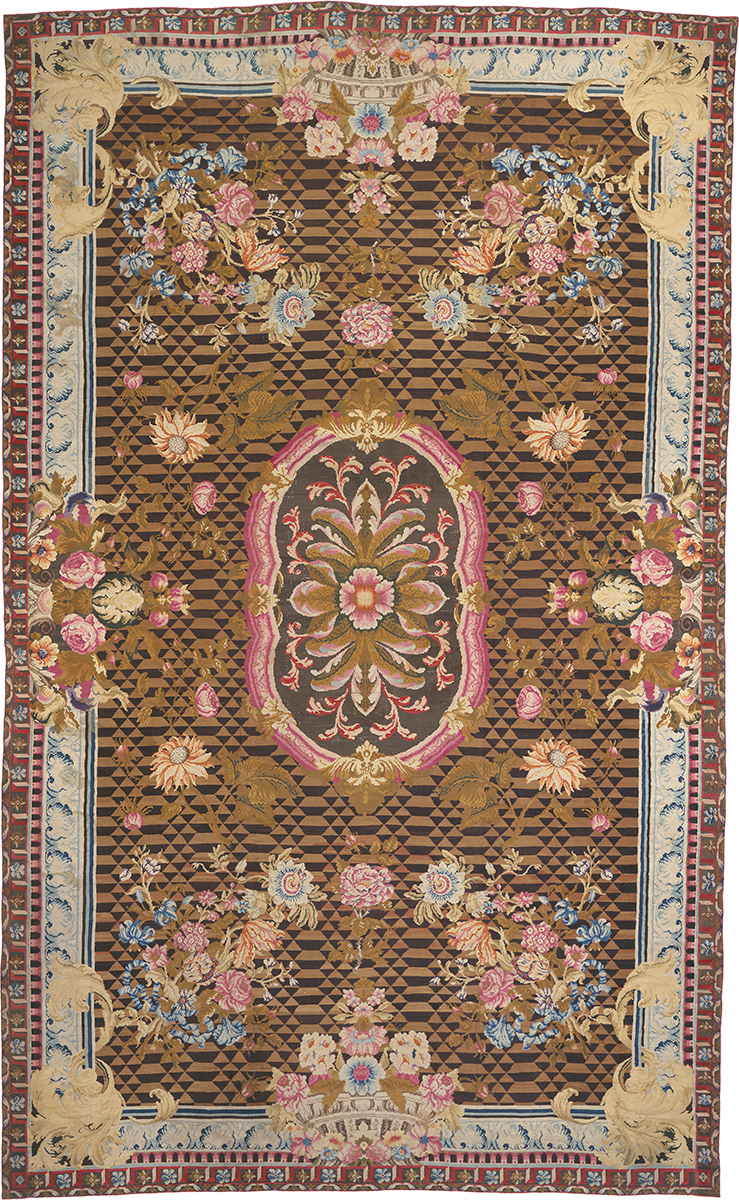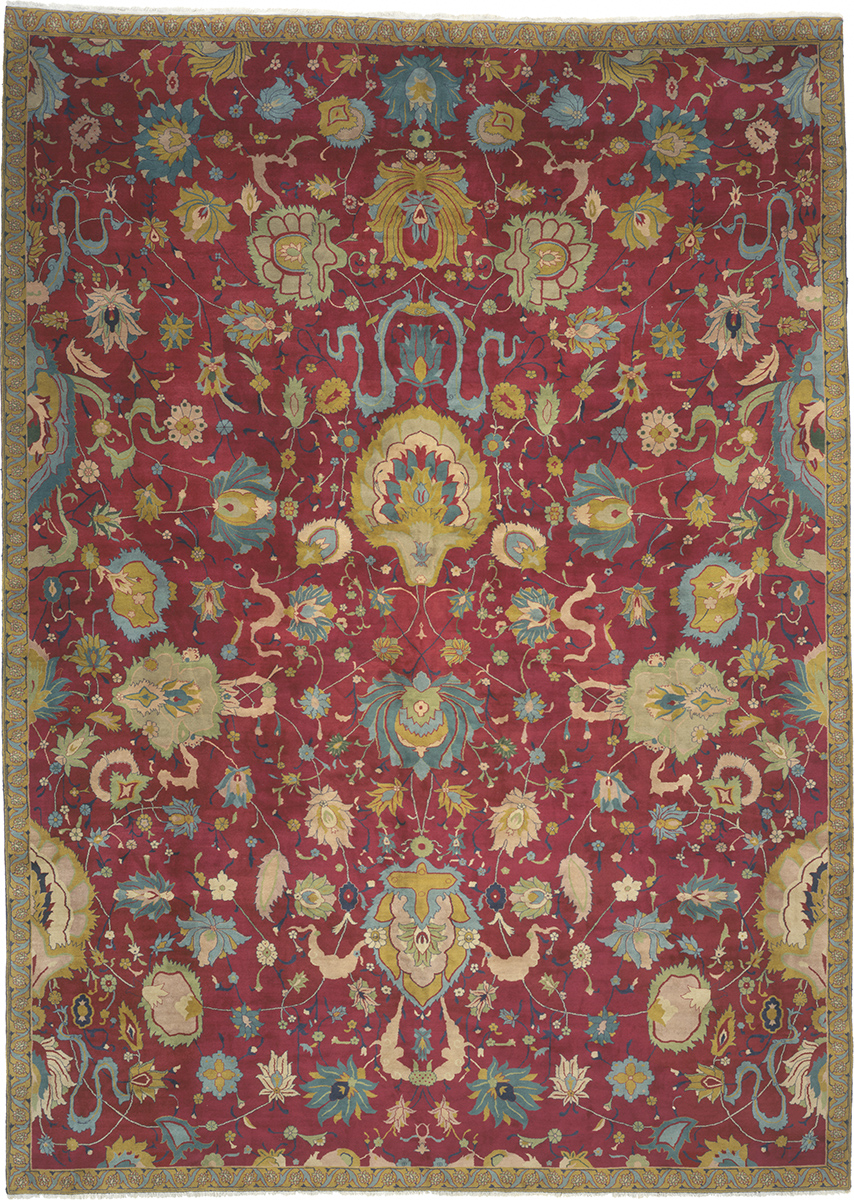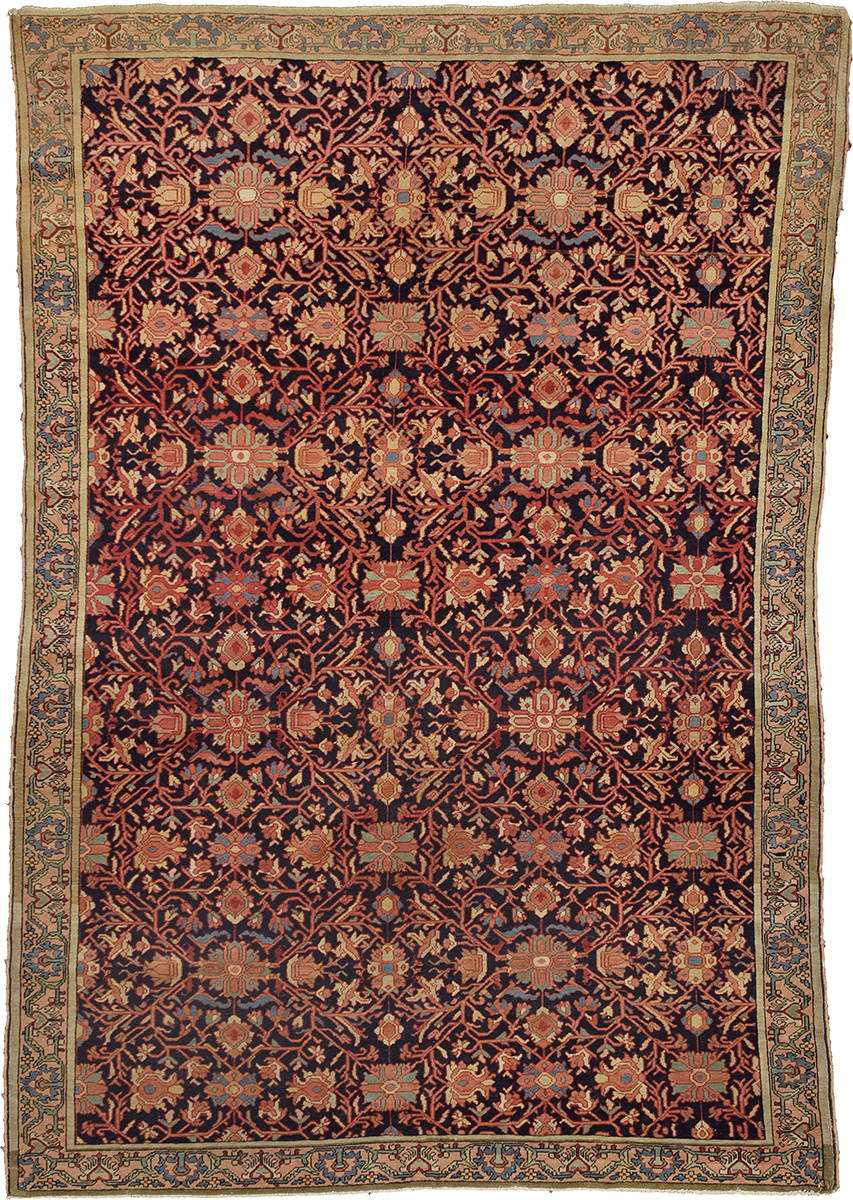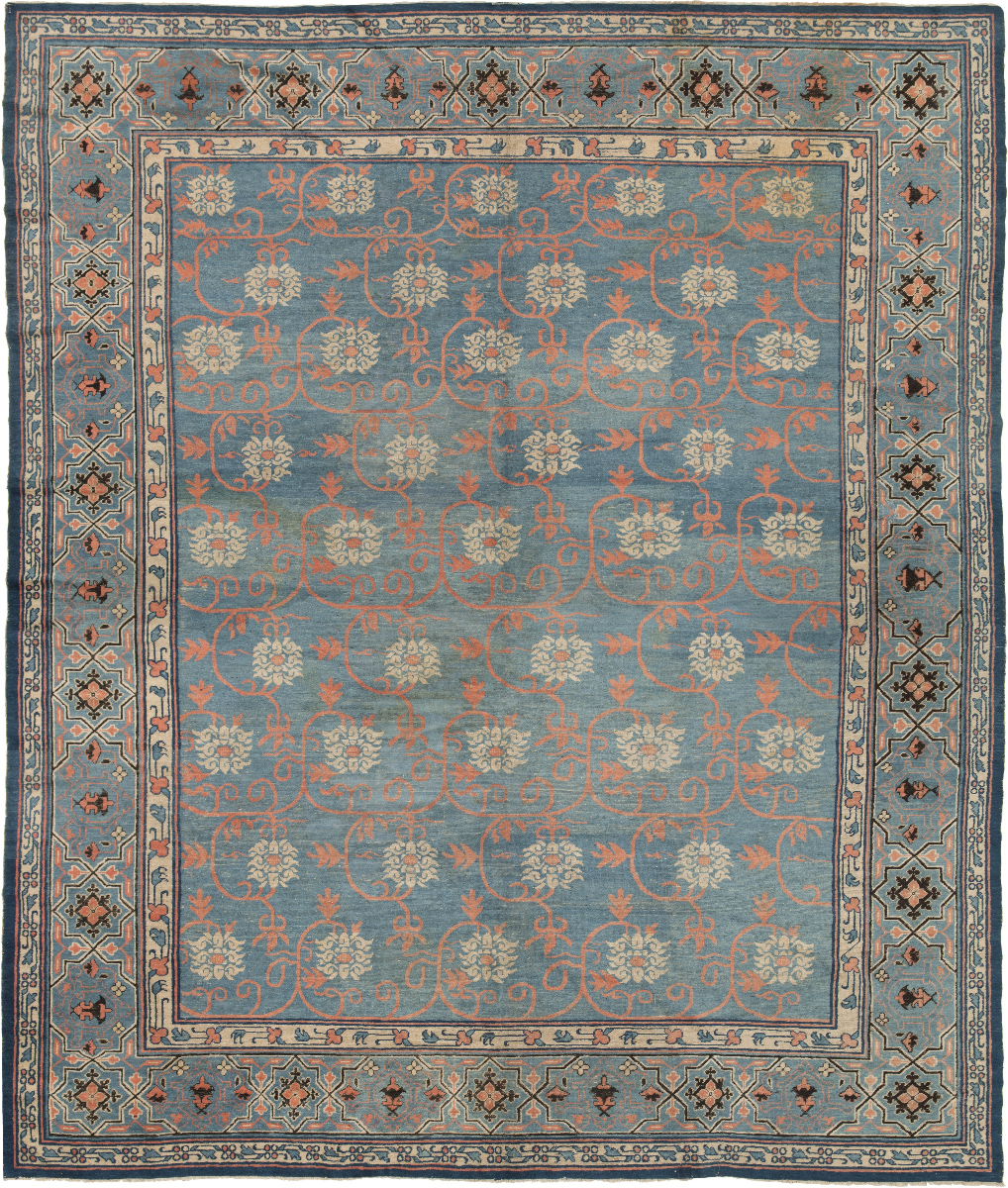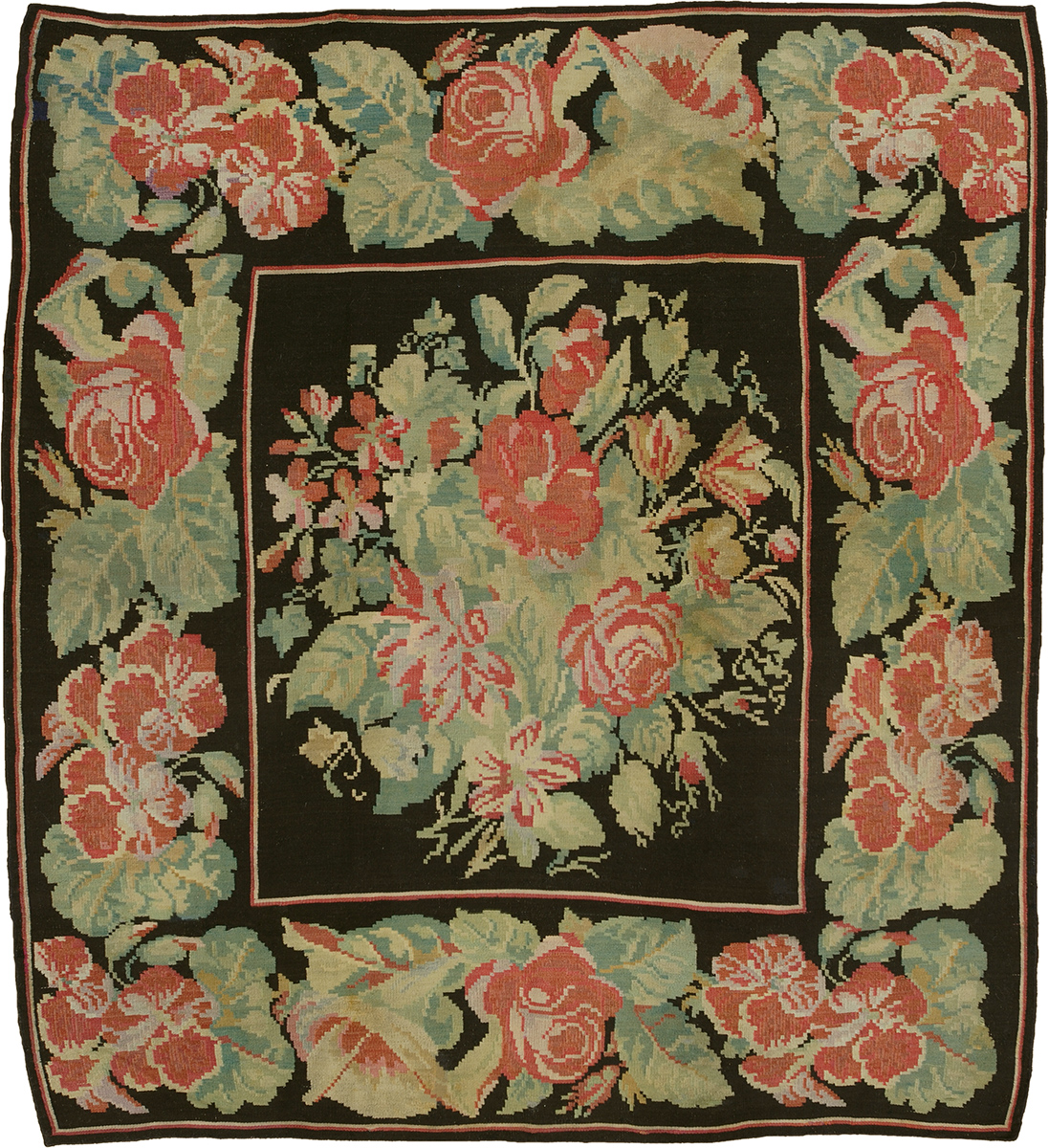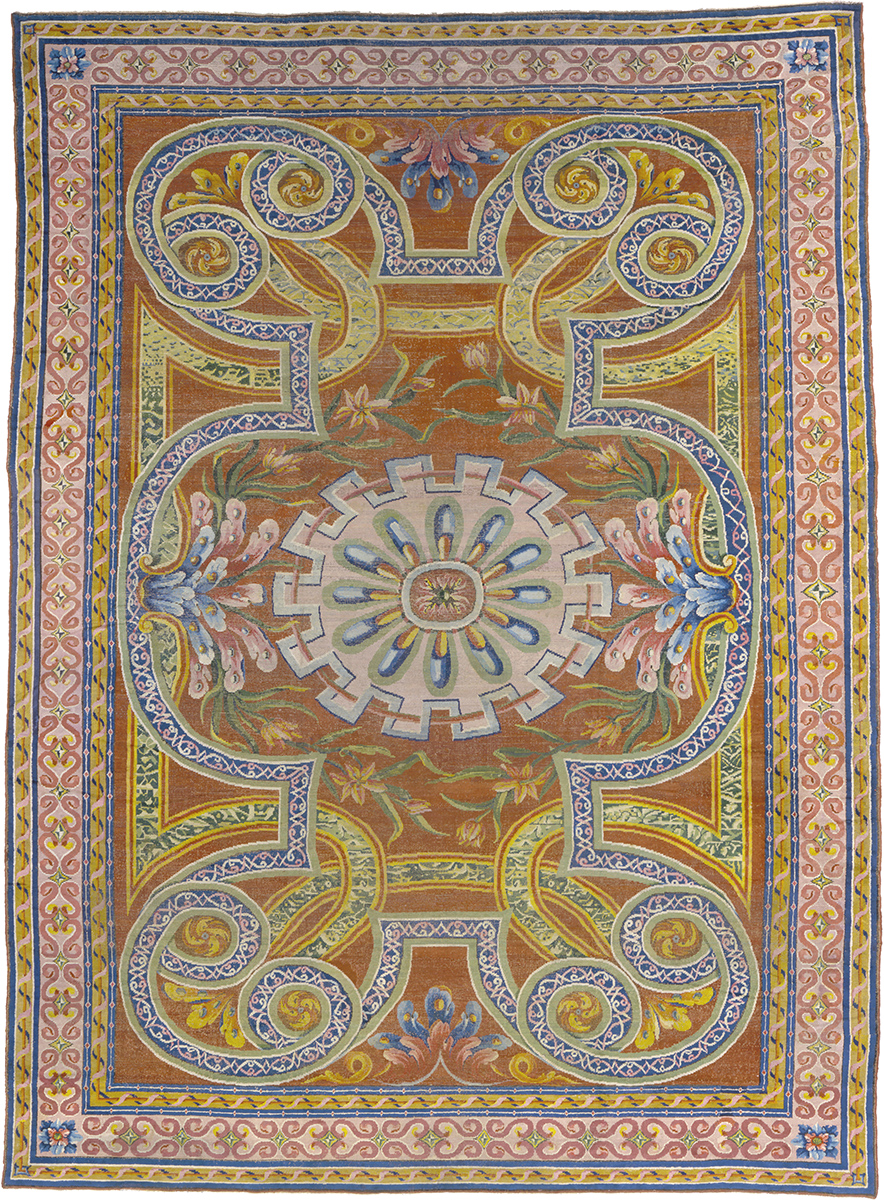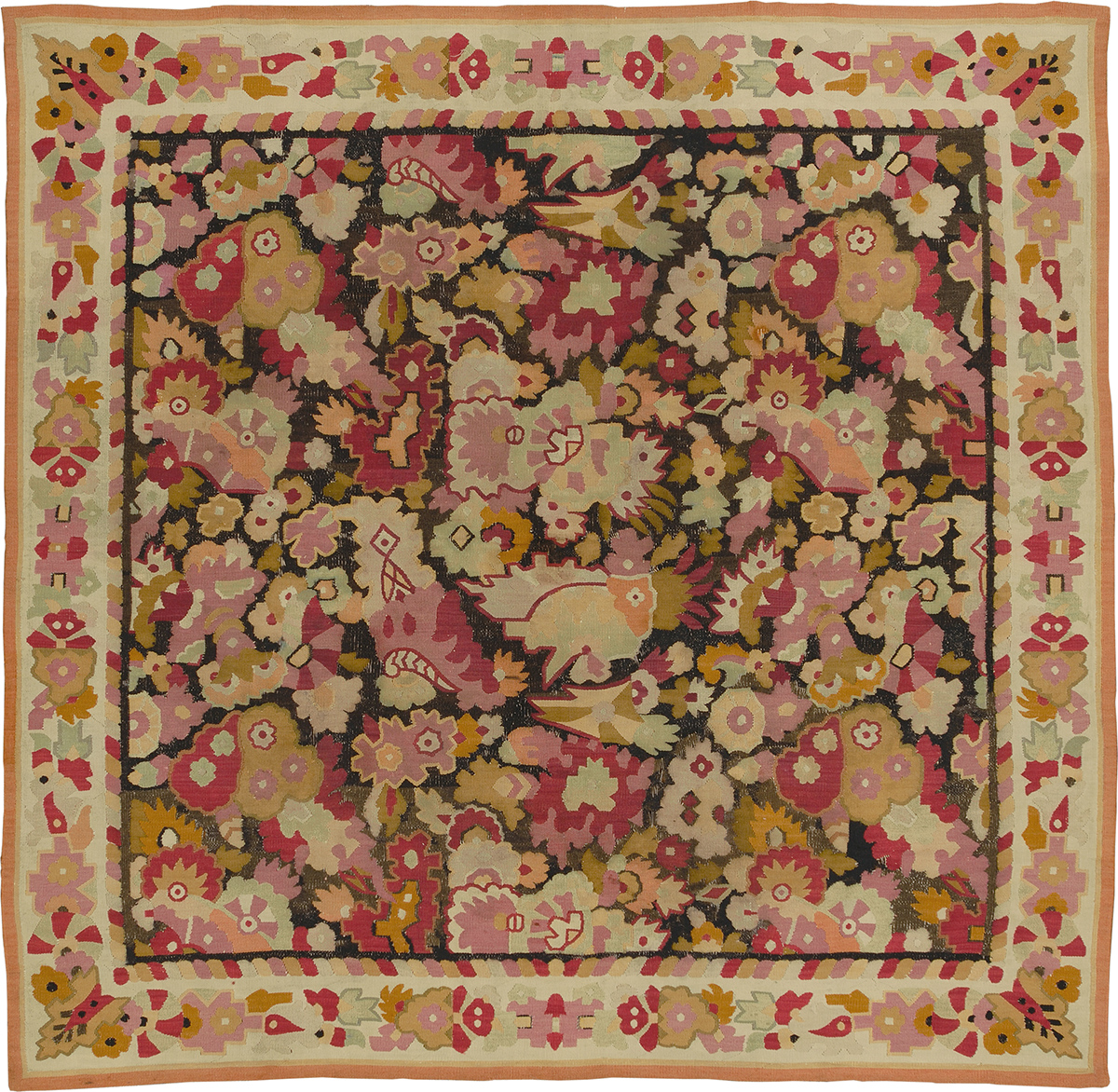December 03, 2020
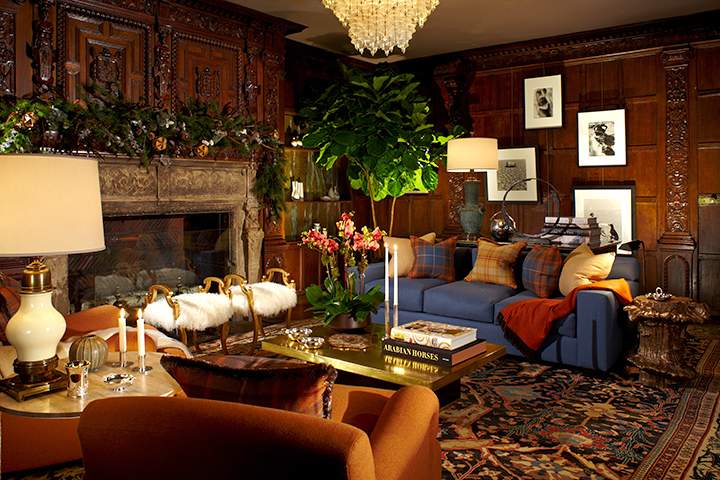
Holiday House 2013. Interior design by Patrik Lönn
"Without a frame there can be no center. The richer the elements of the frame, the more the center will gain in dignity." —Ernst Gombrich
Axminster Rug #03145. England ca. 1760. 29'10" x 17'11" (909 x 546 cm)
After many years that have favored cool minimalism, designers are now rediscovering the pleasures of a more ornamental style. One of the most exciting trends in interior design is maximalism. This is a trend of mixing and layering, of bright colors, unusual textures, bold and busy prints, and unexpected contrasts that delight the eye. This new design mode can include carpets to spectacular effect.
Agra Rug #09073. India ca. 1880. 18'8" x 13'7" (569 x 414 cm)
This is not the first time maximalism has reigned in the interior design world, however, this time around it is less formal and more playful. This new maximalism mixes and blends antiques with modern elements, particularly twentieth-century furniture. Furthermore, instead of the carpet being the single point of bold pattern, a richly ornamented carpet can work as a base to layer on which to mix other patterns. Carpets can be layered on top of each other or other patterns can be strikingly used in upholstery and on walls.
Malayer Rug #11063. Persia ca. 1870. 6'5" x 4'5" (196 x 135 cm)
There is nothing more perfectly suited to the maximalism trend than antique carpets. This design mode looks wonderfully fresh after years of straight lines and cool colors. Be they classic Persian, Indian, eighteenth-century European, or antique Chinese, boldly patterned carpets are the perfect way to add extraordinary depth, warmth, and complexity to a room design.
Chinese Rug #08002. China ca. 1870. 10'11" x 9'3" (333 x 282 cm)
With the winter months now upon us, and in these uncertain times, a richly decorated room with a beautiful and densely patterned carpet can feel protective. This has been true since the beginning, carpets have always had an apotropaic or protective function, a beautiful classical rug seems to magically serve as an island of protection, loveliness and dignity.
Eastern European Kilim #02543. Romania ca. 1890. 6'7" x 6'0" (201 x 183 cm)
Antique carpets are unique works of art and often have fascinating histories woven into their lovely patterns. With a desire for interiors to fascinate as well as express personal style, a carpet might be selected in a signature color or to reflect the personal history or travels of its owner. Our antique rugs are unique statement pieces; for example, a floral, green and pink-hued Bessarabian rug offers an Eastern European luxe bohemian look, and it pairs well with other floral patterns, or contrasts beautifully with starker more geometric lines.
Cuenca Rug #03224. Spain ca. 1790. 25'6" x 18'7" (777 x 566 cm)
Many of our important pieces offer a story and history in themselves. One example is a beautiful eighteenth-century Spanish Cuenca carpet that once graced the reception room of the Palazzo Volpi in Rome. It is fitting that it is associated with this city that for centuries has been associated with a maximal design sensibility. It was in the mid-twentieth century, in another period when maximalism was the order of the day, that the Countess Volpi placed the carpet in a reception room. She was known for her exceptional taste and her mixing and blending of styles and periods in a way that anticipated the trend we are now seeing. The carpet was placed near a sculpture by Alberto Giacometti in a room that would be a backdrop for her and her husband’s glittering parties for the international jet set.
Aubusson Rug #02228. France ca. 1870. 6'7" x 6'2" (201 x 188 cm)
Like the Volpi Cuenca, many of our fine English Axminister and French Aubusson carpets are well suited to a mix with more modern and contemporary furniture to create a synthesis of organic and geometric elements, or of old and new. Furthermore, these carpets, and many other antique rugs, are perfectly suited to this new maximalism mode because they already combine different patterns and colors in striking and unusual ways within their single design, often with the borders doing something slightly disjunctive but interesting in relation to the field, or in unusual color pairings.

